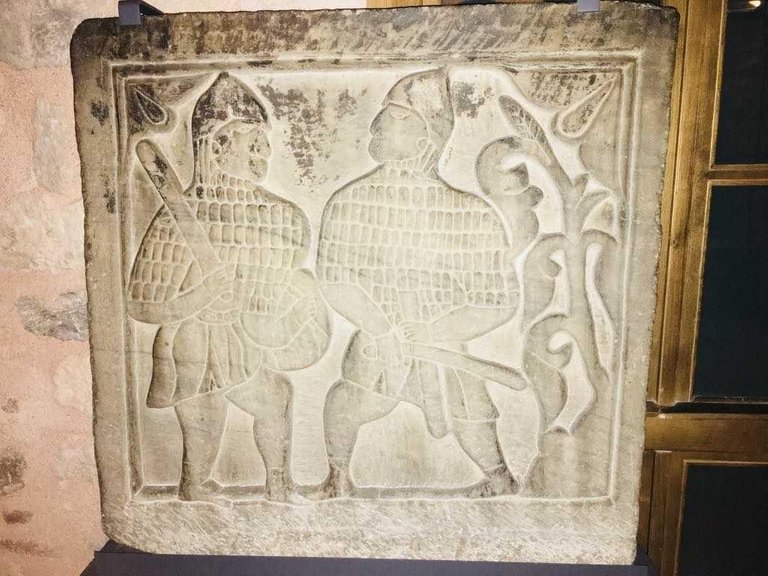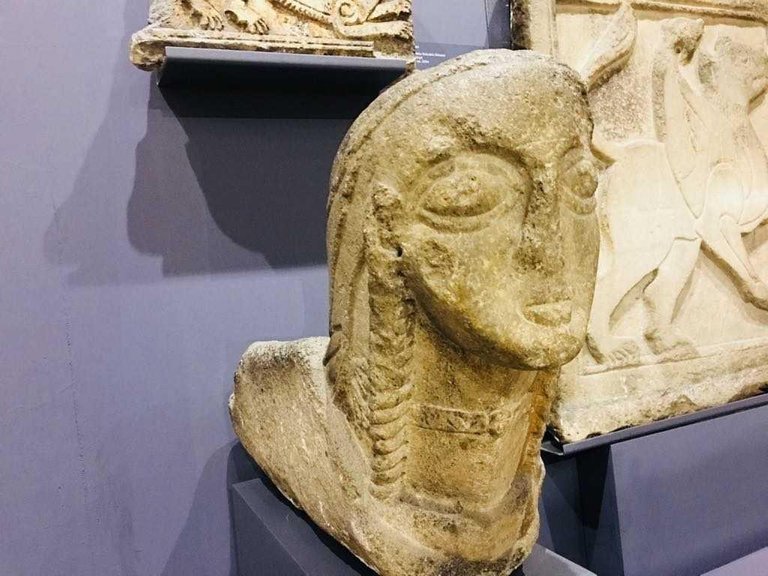Ramadan holidays in Turkey sometimes bring unexpected surprises. For example, at 23:00 at Sultanahmet Square you can walk in the Turkish and Islamic art museums. Not free, of course, but reality itself. This was my first trip to the museum at a very late hour.
The Museum of Islamic and Turkish Art is located in one of the most beautiful old palaces of the Ottoman Empire.

I can not show the historical globalism of the palace from its exterior. My phone does not like the night time. And on the road there was heavy rain. Interestingly, this museum also has minimal light. We walked in the dark. It is possible that this is not always the case, but I am very surprised. The Turkish and Islamic Art Museum stores over 40,000 exhibits. If you want to learn a little about the history of the Turks, be sure to visit it. Even the quick inspection of the exhibits fascinated me. I know for sure, I will definitely go by day, to see and explore everything thoroughly.

The museum building is restored, looks new. On the ground floor there is a souvenir shop where you can buy something for yourself. Today we will only see part of the exhibit, everything is impossible to display. I will think what interests me.

Now let's talk about the palace a bit. Located opposite the Blue Mosque. From the verandah you can see the whole area of Sultanahmet. The building has deep historical roots. Here remained the great vizier of the Ottoman Empire Ibrahim Pasha (1493-1536).

The building is in a large corridor like the Ottoman style. On the right is a small room, where the exhibition museum is on display. It's just one of the many corridors on the second floor. The building was built in the 16th century. In 1938 there was a Turkish and Islamic art museum. Before that, the museum was gathered in the dining room of the largest mosque in Istanbul Sulaimaniye.

The museum posters illustrate the history of the building and the people closely linked to it. But the most important event of the last years is that Sultan Suleiman the Great dedicated the palace to the marriage of Vizier Ibrahim Pasha. After all, he married Suleiman's sister, Khatije Sultan. The history of the resurrection of Ibrahim Pasha from slave to Wazir of the Ottoman Empire was remarkable. Sultan Suleiman since childhood very close to Ibrahim. The future sultan was bought by Ibrahim in the slave market for service. As you know, at that time the slave market flourished and was a very profitable business.

In the Ottoman Empire, with the Sultan, there was no higher position than the Wazir. Suleiman from his childhood friend gave this title. Sultan Suleiman once gave the floor to Ibrahim Pasha that he would never be executed when he came to power. But destiny fate changed to the other side. For every mistake, even without understanding, the Ottoman Empire flew from the shoulders. The head of Ibrahim is no exception. All Wazir's belongings were confiscated, including the palace where the museum was located.

The racetrack of Constantinople is a magnificent structure. It is the center of political life and entertaining the capital.

The Turkish and Islamic art museums on the ground floor present pieces from the historical racetrack. The magnificent structure during the Byzantine and Ottoman empires is one of the busiest places in the city. It lies to the north of the Blue Mosque.

Here is a horse-drawn carriage race, legal announcements and imperial decisions. The racecourse collected about 40 thousand spectators. It was a large-scale construction, which at that time was admired by everyone. Under Justinian I (527-565) the racetrack is getting expanded. He received up to 60 thousand visitors.

Now in the museum we can see part of this grandeur. During the Ottoman Empire, the name Hippodrome was changed to Atmeidan. That in translation means the horse area. The square hosts solemn ceremonies, weddings, sports competitions. "I see" the square and various rebellions, and people's meetings. During the "Nika" uprising in 532, the Emperor Justinian nearly lost his throne.

For the stone hippodrome there is a racetrack made of wood. He seemed much simpler. In 203, Roman emperor Septimius Severus ordered the construction of stone hippodrome. After this, the building was built many times and restored.

In Istanbul the modern Hippodrome is called the area where its architectural decor is located. Three obelisks have reached our days. The above is a photo taken at the architecture museum of Istanbul.

So look at the obelisk in modern Istanbul. (Pictured in the afternoon) The first is the obelisk Konstantin (on the left), the second is Theodosius obelisk (on the right) and Serpent Column (below).

From Serpentine Column there is only one head three. Now he's in Istanbul's archaeological museum.

Next, go to the second floor of the museum. In the restroom there is a collection of time different from the development of the Turks. In the photo you see a trace of Muhammad.


The copy of the oldest hand-written pages of the Quran

Soldiers are peacekeepers from Konya. 13th century.

12-13 centuries. The lights are attractive. These rounds for belts.

**Large Seljuk period products (1040-1157). **
The Seljuk established a great empire in Western Asia. This is one of the most famous dawns in the region from Iran to Anatolia. Cultural exchanges, technical achievements, economic growth, art - all attached to the Seljuk era.


Mameluk era vases (1250-1517).
Mamluk - military estate in the Middle Ages in Egypt.

Gold and silver products from the Eastid period (1370-1507). In the Eastern Empire, the dawn of art was at its peak in the 15th century. Even called the Oriental Renaissance, comparing it to the European Renaissance.

The Ottoman Tetris of the 18th century. If it's serious, then complete the game card.

Al-Quran in beautiful bindings. There are many of them in the museum. Some are decorated with precious stones, gold, silver.

Embroidery on cloth brought from various mosques. This is just one canvas. In the museum there is still a large sample. I do not remember where they came from.

The rest of the 13th century from Konya. Empire Seljuk diverse with images of animals. Among them are mythological and real. Very often they create hybrid animals. There is a sphinx - a person's face, but the body of a lion. Sometimes sphinx is added with wings.

Seljuk Tiles. In cult buildings, Seljuks often use a turquoise-blue color with stars. The material for their work is silicon-based clay.

Wooden carvings in the Seljuk era are very similar to the style of Mesopotamia and Persia. Seljuk is very familiar with the technique of carving. I really like the Seljuk style in different ways. In general, they love to decorate everything. But the product in the end does not look heavy. There is airiness and tidiness in it. And it does not matter whether it's a rock or a tree, or any other material. It was Seljuk who began to frame openings of windows and doors, as well as the edge of the roofs of houses with beautiful filigree patterns.

The museum has a huge collection of carpets, considered one of the best in the world. In the photo, the carpet from the Ottoman Empire. In the great room you can see elements of the architectural group attached to the Ottoman period.

Such support and boxes were made for the storage of the Koran in the Ottoman Empire. The Ottoman Empire was decorated with these items with stones and precious metals.

Night view from the palace courtyard of Ibrahim Pasha (museum building).
Thank you for your attention!
You made it look as if I'm actually there, very detailed... I've only visited one museum before in a nearby city..... I'll include it as one of the places I should visit before I turn 30...